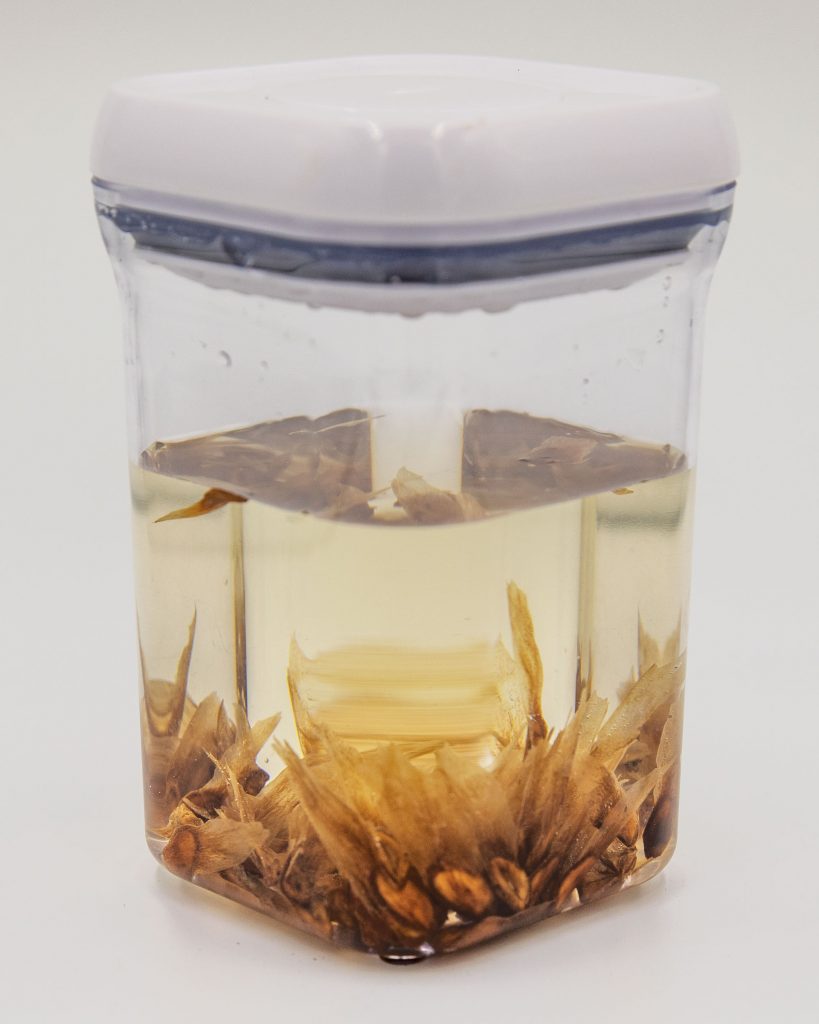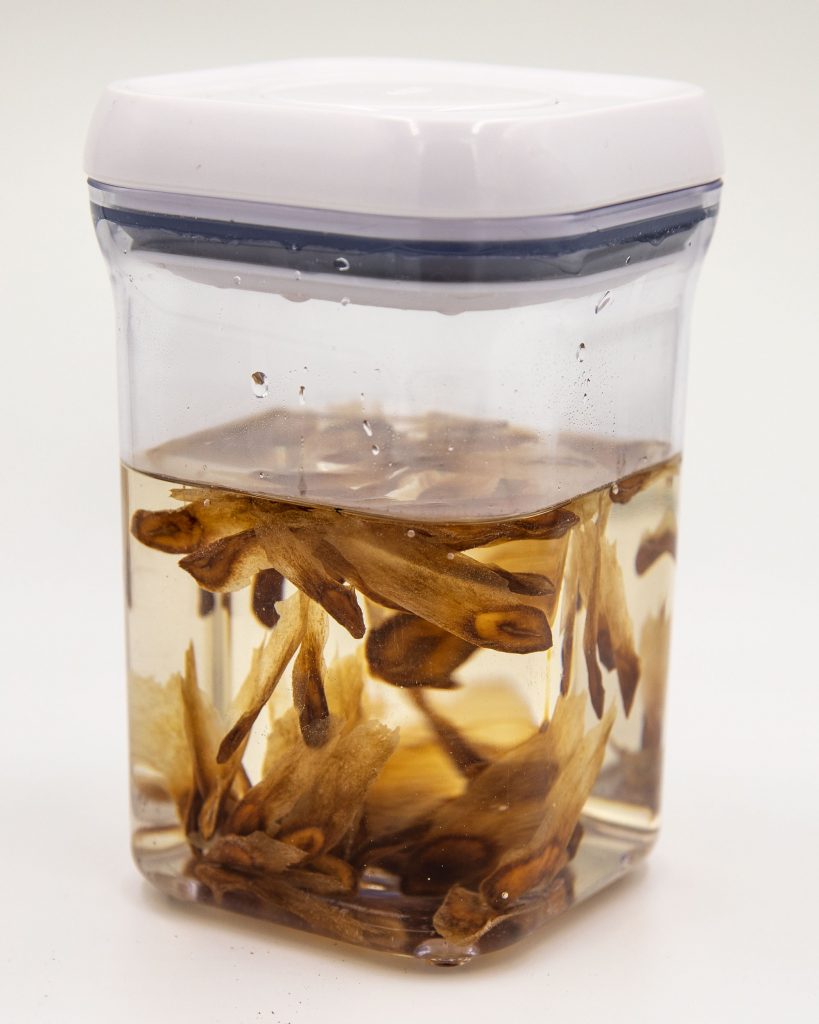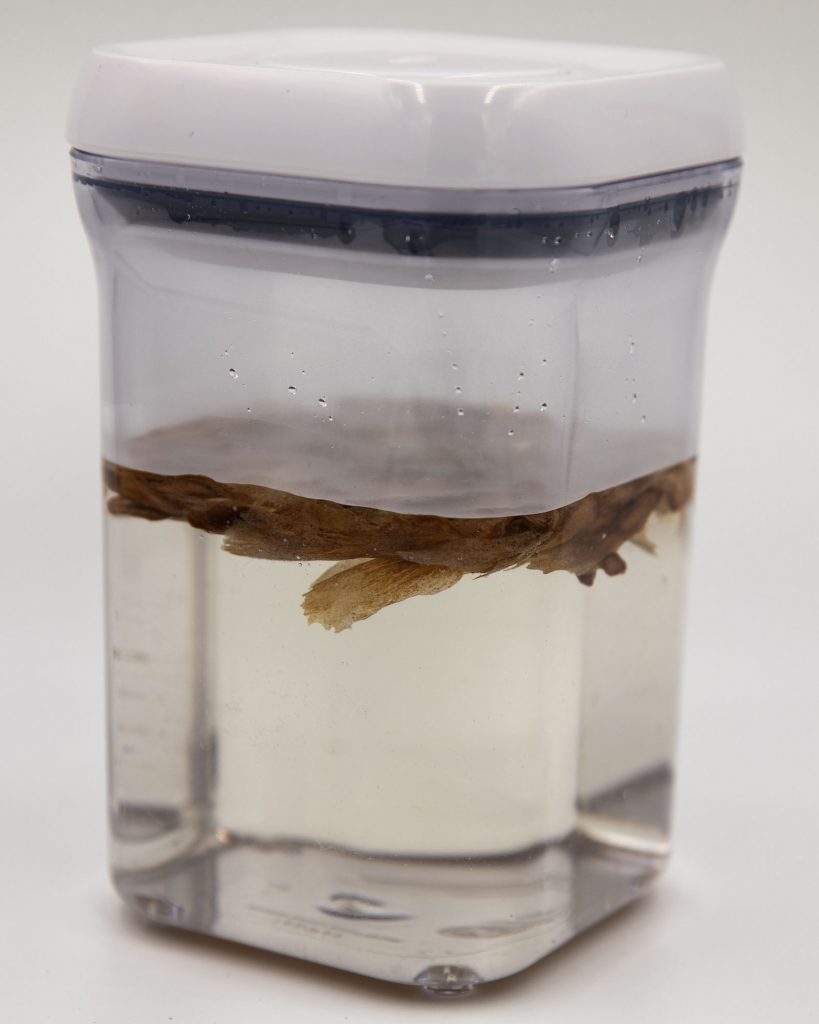Explore the enchanting world of plumerias with our comprehensive ‘Growing Plumeria / Frangipani from Seed Guide.’
Soaking Plumeria Seeds to Test Viability
Soaking Plumeria Seeds in Container to Test Viability
To determine the germination potential of a batch of 70 seeds, I’ve implemented a method that harnesses the physical properties of water to accelerate the soaking process. The procedure involves filling a plastic container to the halfway mark with hot tap water and carefully adjusting the temperature to be warm to the touch without causing discomfort. Notably, the water used is sourced from a well, which is relevant due to its unique mineral composition compared to municipal water supplies.
The underlying science of this method revolves around the concept of water viscosity. Viscosity refers to a fluid’s resistance to flow; colder water has a higher viscosity, meaning its molecules are more likely to cling to one another. Conversely, heating the water decreases its viscosity. The molecules gain energy and move more freely, reducing their tendency to adhere together and creating a more fluid state. Using hot water, the seeds are encouraged to absorb moisture more rapidly, providing a gentle warmth that is conducive to germination. This approach is particularly effective for fresh seeds, such as these, which are less than two weeks old from harvest.

Plumeria seeds are put on to soak in a sealed

Plumeria seeds after 2 hours soaking in a sealed container, water still warm.

The third picture is after 3 hours of soaking. Only a few are left floating…I knew two very thin ones looked like they would not be viable.
The seeds I’m currently working with are exceptionally fresh, having been harvested less than two weeks ago. This freshness is a significant factor in their ability to absorb water efficiently. In contrast, older seeds, particularly those aged three years or more, generally require a longer duration to adequately absorb water due to the natural aging process, which affects their permeability. I’ve found that a minimum soaking period of four hours for these older seeds is beneficial, though leaving them to soak overnight yields even better results. This extended soaking time ensures that the older seeds are sufficiently hydrated, which is crucial for successful germination.
On a different note, when I plant seeds specifically for developing rootstock, I deviate from this soaking method. For rootstock cultivation, I plant the seeds directly without any prior soaking. This approach is tailored to encourage robust root development, which is essential for strong and healthy rootstock growth.